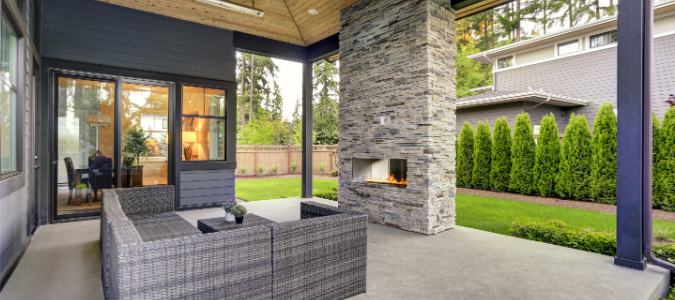
You have been scrolling through gardening blogs and tearing out pictures from magazines, collecting ideas that will refresh the look of your outdoor living space. Lush plantings and meandering pathways, a front-gate arbor with climbing roses, a formal courtyard with a water feature are all on the table. Perhaps you have your heart set on an outdoor kitchen and covered patio? The good news is that thinking about your outdoor space, and determining how you want to use it, is the first step to making a change—whether your project is large or small. The not-so-good news is that implementing those ideas is not always as easy as it seems, and it can, in fact, be quite overwhelming when you get beyond the research phase. When it comes to really getting started, many homeowners wonder if it is worth it to hire a landscape designer or if it makes more sense to take the project on themselves.
There are many benefits to hiring a landscape designer, including the fact that a professional:
- Owns the correct tools and equipment
- Can either implement your ideas or give you inspiration
- Has the ability to take on more technical aspects of your design
- Can work on your yard during times when you are otherwise committed, whether either to your job, other obligations or leisure activities
- Has extensive experience with what works and what doesn’t in your area and with your priorities and needs in mind
The main potential barrier to hiring a landscape designer is cost. While that concern is completely valid, it’s important to take into account that putting together a comprehensive landscape design plan—and executing it—takes creativity, extensive planning and research, physical labor and time. While do-it-yourself projects can be enjoyable and rewarding, sometimes doing all of the work yourself is not practical, and in some cases, can even end up costing more if you do not have the proper tools, equipment or know-how. In many cases, homeowners don’t realize these hidden costs until the project is underway, at which point they are faced with the difficult decision of trying to keep going or admit they are in over their head and calling in a pro.
If you are considering hiring a landscape designer, you may be curious about what that job entails and how one could help with the project you have at hand. Keep reading to learn more about the field and what options you have for getting the most out of your outdoor spaces.
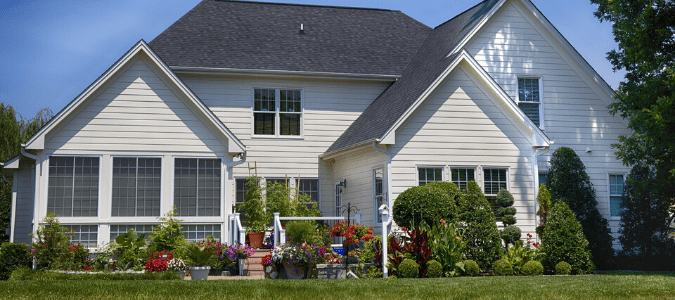
What Is A Landscape Designer?
If you haven’t used a landscape designer before, it might seem a little daunting. Do landscape designers only work on large-scale projects? Do you have to hire a landscape designer for all of the work or can you do some of it yourself?
Landscape designers work with clients to beautify their outdoor spaces and make them more functional. With training and education in horticulture and garden design, landscape designers are able to help clients create their ideal landscape, while taking into account any local conditions that might inform plant selections. Whether you are planning an extensive landscape remodel or a smaller project, such as planting a rock garden, doing a landscaping spring cleanup or redoing your front walk, landscape designers can assist you with part of your project or they can manage the entire process, from start to finish. A landscape designer can also give you guidance on how to maintain your yard once the project is done, such as recommending how to prune your salvias or when to ramp up your watering schedule as summer approaches.
There are many factors involved in determining how much help you will need. These include budget, your skills and experience in landscaping and the time frame in which you would like the project completed. Depending on these factors and the scope of the work, a landscape designer may sometimes enlist the services of other landscape professionals and contractors to execute on the design you approved, or your designer may be able to take the job on without additional assistance. In some cases, you can even purchase a landscape plan from a professional and put off the decision about executing the project until later. In those cases, just keep in mind that costs can change over time, and the availability of your designer can change if you decide to delay getting started. If you start in a different season, or if you use a different professional, you may need to adjust your plans, budget and timeline.
If you decide you want to try making landscaping improvements yourself, there are some things you should keep in mind before you start your project, as well as while you work through it.
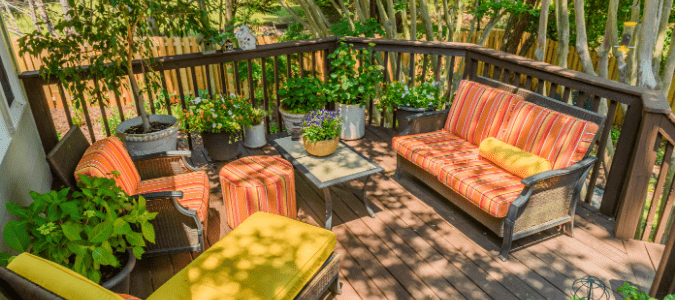
Landscape Design Basics
If you decide you want to learn more about landscape design so that you can decide whether to hire a pro or do it yourself, there are a few basic steps you should know about that are involved with every project, no matter how big or small.
Think About Your Wants And Needs
Begin by making a list of why you want to revamp your spaces. Maybe you want to grow an herb garden or perhaps you want to integrate more native plants into your landscape. Draw a rough sketch of your yard and think about how you are currently using your yard and where you would want these new elements to go. Use a pencil so you can easily erase and redraw when you have new inspirations.
Think About Location
Do some areas of your yard get more shade than others? Are there some spots where your sprinklers don’t reach? Think about any elements unique to your property when starting to plan where and how you want to make changes. It’s important to take time to think about these specifics so you don’t rush this step. Failing to think about sun exposure, watering, soil quality and any other hyperlocalized conditions is a common mistake amongst beginners which could lead to unexpected surprises, including wilted plants and herbs.
Spend Time In Your Current Space
Spend time in your yard during the brainstorm process during different times of day. As you are physically in your space, you may realize that salvias may flourish in one part of the yard and not another, or perhaps you would rather have a gathering space in a certain corner of your yard, where the setting sun won’t be in the eyes of your guests. By actually thinking through your ideas in your space, you may get a fresh perspective.
Decide On A Focal Point
Are there any aspects of your yard which you want to bring attention to? Do you want to create a gathering spot next to a new water feature? Or do you want to look out of the window to a beautiful new rose garden? Decide on a few aspects of your yard that you want to highlight. Let these focal points guide you through the rest of your design.
Make Sure There Is Balance
When creating a landscape design, you want to find the perfect balance of repetition and new features. Try to add texture by having varying heights, such as tall trees, medium-sized salvias, low growing grass and stone walkways. Mix in different colors and plants throughout the yard, while also looking for spots where you can plant more of the same. With too much repetition, your landscape design will be boring. However, if nothing in your yard is the same, it won’t look cohesive. Landscape design is all about balance.
Start Small
If you are committed to working on your first landscaping project on your own, start with some of the smaller tasks to get your feet wet. Spend some time removing existing plants where you want to plant your herb garden or focus on areas of your lawn that you want to have replaced. Many homeowners get discouraged when first starting out with their landscape design because they think about the big, final product. By starting off small, it will feel less overwhelming.
Be Open To Making Changes
Sometimes, things don’t work out how we expect them to, especially during a project we’re working on all on our own. If the flowers you purchased end up not suiting you, it’s okay to go back to the drawing board. When it comes to landscape design, patience is key.
Due to the time and effort that goes into planning, designing and actually implementing a new landscape, many homeowners find it much easier to outsource at least one or two of these steps to a landscape designer. Additionally, experienced landscape designers will be able to quickly and accurately determine whether an area has too much sun exposure for your plans or if your irrigation system won’t reach where you want to plant an herb garden. Many times, by hiring a landscape designer, you can avoid costly and time-consuming mistakes and see results more quickly.
Another important aspect of landscape design is installing the correct lighting to highlight the beautiful new features in your yard.
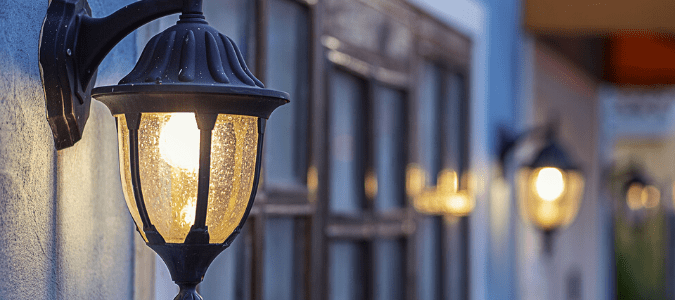
Landscape Design Lighting: What Are My Options?
Like the icing on a cake, landscape lighting can add the finishing touch to your garden and to your home’s overall curb appeal. In addition to showcasing ornamental trees and creating an ambiance for outside gatherings, landscape lighting can also increase the safety and security of your home by illuminating a garden path, dark hedges, garden walls and flower beds.
Just like indoor lighting, there are outdoor lighting options for every budget, from basic path lighting to energy-conscious automated lighting that you can easily control with the touch of a button from your phone or computer.
Some common landscape lighting fixtures include:
- Path and area lights: As the name suggests, these lights can help to illuminate walkways and create a safe and welcoming warmth for you, your family and your guests while navigating your yard.
- Accent lights: Also called spotlights, homeowners use these outdoor lights to bring someone’s eye to a certain focal point in their yard, such as gardens, trees or water features.
- Hardscape fixtures: This type of light can be concealed under architectural or landscape features, such as along the counter of an outdoor kitchen or underneath window ledges.
But, how do you go about deciding which outdoor lighting is best for your home? This is another area that a landscape professional can assist you with. A designer can talk with you to discuss your needs, examine your existing electrical system and capacity and determine which types of lighting will be most beneficial for your space in terms of budget, style and functionality. If you desire, a designer can also incorporate lighting into your master design plan and indicate where to place each light and how to space them out for maximum impact.
Another aspect of your yard that landscape designers can assist you with is helping you with your plant choices. In recent years, using native plants in landscaping has become increasingly popular, particularly as more municipal governments have put limits on outdoor watering.
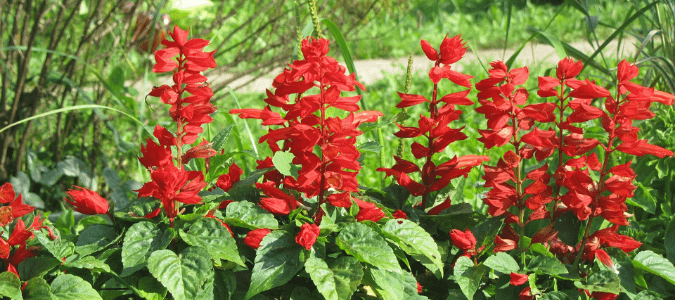
Benefits Of Landscape Design With Native Plants
When it comes time to selecting plants for your yard, the choices are endless. Nurseries often sell plants from many different regions, but there are very compelling reasons to consider buying plants that are native to your area. Economically, they make sense. Because they are so hardy and have adapted to your region’s climate, you will spend less money on irrigation and fertilization.
Native plants also require less work and maintenance. They are suited to our climate and our soil and have supported the native wildlife and insects in the area throughout time. When situated in the right location and established in their ideal soil, native plants will thrive with very little upkeep.
Furthermore, if you enjoy having birds and pollinators in your garden, native plants provide food and shelter for them. In fact, according to one study, even planting a small number of non-native trees and shrubs can negatively impact native bird populations. Native plants also create a vegetative canopy to slow and absorb winter rainfall, which helps reduce flooding and erosion. Additionally, they are rarely invasive as some non-native plants have proven to be.
One of the best ways to find out which native plants will thrive in your region is to consult a local landscape designer. A professional can also help you select native plants that meet the specific needs and requirements of your outdoor space and design plan.
ABC’s Landscape Designers Can Transform Your Yard
While putting in a new garden, walkway or water feature can sound like a great idea, actually implementing one of these projects on your own can quickly become daunting. Instead of spending all your free time in your yard, reach out to the landscaping professionals at ABC Home & Commercial Services. Our experienced designers can either implement your vision or give you inspiration, so you have a beautiful, practical space to spend time.